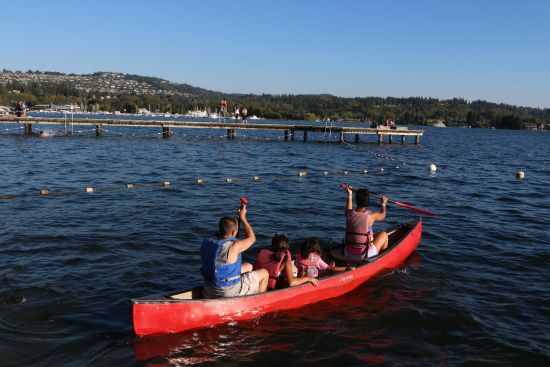Bellevue is the fifth largest city in Washington, with an estimated population of 155,000 (2024). Bellevue is the high-tech and retail center of the Eastside, with more than 160,000 jobs and a downtown skyline of gleaming high-rises.
With beautiful parks, top schools and a vibrant economy, Bellevue is routinely ranked among the best mid-sized cities in the country.
While business booms downtown, much of Bellevue retains a small-town feel, with thriving, woodsy neighborhoods and a vast network of trails. With nearly 100 parks, Bellevue is known as "a city in a park." The city's crime rates are consistently low.
Retail options abound in Bellevue, and an arts community is taking off in BelRed. Bellevue's agrarian traditions are celebrated in the spring and fall at popular fairs at the Kelsey Creek Farm Park. More than 300,000 people visit the downtown area the last weekend in July each year for arts and crafts fairs.
The city spans more than 33 square miles between Lake Washington and Lake Sammamish and is a short drive from the Cascade mountains. People can kayak within sight of downtown in the Mercer Slough Nature Park, a 320-acre wetland preserve or at a couple of Bellevue locations in Lake Washington.
The population is growing and becoming more diverse. In 2015, according to the U.S. Census, Bellevue's population became evenly split between non-Hispanic whites and people of color, making the city one of the most diverse in Washington.
History
Before the arrival of settlers of European origin in the 1800s, Coast Salish tribes including the Duwamish and Snoqualmie lived, hunted and fished around Puget Sound for thousands of years. Where present-day Bellevue now stands was a densely wooded swath of land, swampy in places, between Lake Washington and Lake Sammamish. For parts of each year, Coast Salish tribes occupied villages where Eastside rivers drained into Lake Washington.
After coal was discovered in the Coal Creek area in 1867, white settlers began to mine and log the area. In the 1880s, the village on Meydenbauer Bay was named Bellevue ("Beautiful View" in French), either in reference to the view from the new post office's window or to a city in Indiana of the same name from which prominent settlers came.
With the turn of the century, Bellevue's forests were logged and the village prospered as a farming community. The rich soil yielded bountiful harvests and the residents sold their fruit and vegetables, ferried across Lake Washington to Seattle, then transported even farther after a Northern Pacific rail line came through in 1904. Japanese immigrants established a collective warehouse and soon produced the bulk of the strawberries and vegetables harvested in Bellevue.
The completion of the first bridge across Lake Washington in 1940 was a major event for Bellevue, bringing an influx of new residents. Bellevue Square, one of the first suburban shopping centers in the country, opened in 1946.
The nation's entrance into World War II marked a dark chapter in the community. In response to the attack on Pearl Harbor, President Franklin Roosevelt issued Executive Order 9066 in early 1942, creating “internment camps” for Japanese Americans living on the West Coast, including those in Bellevue, and forcibly incarcerating them. Only 11 of Bellevue's 60 first- and second-generation Japanese families later returned to the area.
The City of Bellevue incorporated in 1953. The young city proceeded to annex neighboring areas. In the past three decades, the city has grown to skyscraper heights downtown and shed its "suburban" status to become a thriving, diverse metropolis and a high-tech hub.

